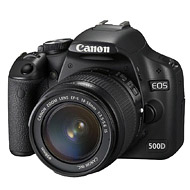What do you think about this photo?Do you have questions or curiosities about this image? Do you want to ask something to the author, give him suggestions for improvement, or congratulate for a photo that you really like?
You can do it by joining JuzaPhoto, it is easy and free!
There is more: by registering you can create your personal page, publish photos, receive comments and you can use all the features of JuzaPhoto. With more than 253000 members, there is space for everyone, from the beginner to the professional.
| sent on November 23, 2011 (18:45) | This comment has been automatically translated (show/hide original)
I put hand to shoot that I did last winter, to see if I could pull off something decent. This photo was one of the first made with the refractor 80/480, I had not the chance to do the flat (and you can see the vignetting) and I still had the "courage" to do long exposures. But I was sorry to leave buried in the HD photos and even if you can do so much better I decided to share the same picture, which improved as is always the image of one of the most spectacular objects in the winter sky.
Clear Ho rimesso mano a riprese che avevo fatto lo scorso inverno, per vedere se riuscivo a tirare fuori qualcosa di decente. Questa foto è stata una delle prime fatte con il rifrattore 80/480, non avevo ancora la possibilità di fare i flat (e si vede dalla vignettatura) e non avevo ancora il "coraggio" di fare pose molto lunghe. Però mi dispiaceva lasciare le foto sepolte nell'hd e anche se si può fare di molto meglio ho deciso di condividere lo stesso la foto, che per quanto migliorabile è sempre l'immagine di uno degli oggetti più spettacolari del cielo invernale.
Chiara |
| sent on November 23, 2011 (22:08) | This comment has been automatically translated (show/hide original)
Hello Chiara, the picture is beautiful, with the area of ??the trapezoid-read ... I would say very balanced. Even better for the fact that you have the patience to drive manually so long as well as assemble and align everything.
Because they are just at the beginning of astrophotography I one thousand questions for you, but for now I limit myself to two.
that ISO uses the 500D and polar alignment you (only polar scope or do even drift Bigourdan?) because I see a lot of stars point to the edge of the field ..
Thank you and congratulations again
Henry Ciao Chiara, l'immagine è bellissima, con la zona del trapezio ben leggibile... molto equilibrata direi. Ancora più bella anche per il fatto che hai la pazienza di guidare manualmente così a lungo oltre che di montare ed allineare il tutto.
Siccome sono proprio agli inizi dell'astrofotografia avrei mille domande da farti, ma per ora mi limito a due.
che ISO usi sulla 500D e che allineamento polare fai (solo cannocchiale polare o fai anche la deriva di Bigourdan?)perchè vedo stelle molto puntiformi anche ai bordi del campo..
Grazie e complimenti ancora
Enrico |
| sent on November 24, 2011 (9:49) | This comment has been automatically translated (show/hide original)
Thanks Henry!
it is true, I have not indicated the ISO! Usually imposed at ISO 800, not so much a question of noise, but because in 1600 you could have a sky background too bright. Polar alignment I only do it with the telescope's polar EQ6, the Bigourdan is much more accurate, but since I've seen that even with the telescope only the results are satisfactory prefer to spend more time on the field at times that all'allinemaneto. The pinpoint stars to the edge of the field I have to admit that I'm on the telescope, which is an astrograph exceptionally, as a little boy.
Skies!
Clear Grazie Enrico!
é vero, non ho indicato gli ISO! Di solito imposto a ISO 800, non tanto per una questione di rumore, quanto perchè a 1600 si rischia di avere un fondo cielo troppo chiaro. L'allineamento polare lo faccio solo con il cannochiale polare della EQ6, il Bigourdan è molto più preciso, ma siccome ho visto che anche con solo il cannochiale i risultati sono soddisfacenti preferisco dedicare sul campo più tempo alle riprese che all'allinemaneto. Le stelle puntiformi ai bordi del campo devo ammettere che sono merito del telescopio, che è un astrografo eccezionale, per quanto piccolino.
Cieli sereni!
Chiara |
| sent on November 24, 2011 (19:59) | This comment has been automatically translated (show/hide original)
Clear, the image is remarkable.
I did not understand one thing: Always do a double exposure to not overexpose the core but then the merger do it with photoshop on 2 levels, or leave it all to the appropriate program (type DeepSkyStacker)? Chiara, l'immagine è notevole.
Non ho capito una cosa: Esegui sempre una doppia esposizione per non sovraesporre il nucleo ma poi la fusione la fai con photoshop su 2 livelli oppure lasci fare tutto all'apposito programma (tipo deepskystacker)? |
| sent on November 25, 2011 (10:30) | This comment has been automatically translated (show/hide original)
Thanks Fabrizio!
I put together separately poses the same time getting the two images and then join on two levels with PS, using the same procedure that is used for the double exposures of landscapes. The program specifically for astrophotography (use MaxIm DL) use it only for alignment and pre-treatment for the rest prefer PS.
Clear Grazie Fabrizio!
Metto insieme separatamente le pose con lo stesso tempo ottenendo due immagini e poi le unisco su due livelli con PS, con la stessa procedura che si usa anche per le doppie esposizioni dei paesaggi. Il programma apposta per l'astrofotografia (uso MaxIm DL) lo uso solo per allineamento e pretrattamento, per il resto preferisco PS.
Chiara |
| sent on November 25, 2011 (18:40) | This comment has been automatically translated (show/hide original)
Thanks Clare for the info ... So ISO 800 on the 500D I would say it very well, although I do not know then how much noise you have to remove later, I'm not having experience, I made a single installation of M42 of 90 seconds with the 40D at ISO 500 (at 200mm f4 with the binacone 2.8) for fear as well as the gray sky also a lot of money, but I must say that the result is quite positive. For guidance I let the hype stationed only with the Losmandy polar scope and the stars are very point though 200 mm are not enough to judge ... the problem I have it in my irregular periodic frame a pose that is not a bust me (You will probably I'll have to clean the gears). Now the other question (please bear with me), I saw that you did put 15 two-minute tours, but they were all good or are the top 15 of a longer series? and then the other question, your rifrattorino has the focal reducer / field flattener or naked? because if he is naked is good but a lot! and also fairly apo.
Thanks again for the availability & agraI; ;-)
Henry Grazie Chiara per le info... Quindi ISO 800 sulla 500D direi che rendono molto bene, anche se non so poi quanto rumore hai dovuto togliere in seguito, io non avendo esperienza ho fatto una posa singola su M42 di 90 secondi con la 40D a 500 ISO (a 200mm f4 con il binacone 2.8) per paura oltre che del cielo grigio anche di un sacco di grana, ma devo dire che il risultato è abbastanza positivo. Per la guida ho lasciato fare alla montatura stazionata solo con il cannocchiale polare Losmandy e le stelle sono molto puntiformi anche se 200 mm sono pochi per giudicare... il problema ce l'ho nel periodismo della mia montatura che una posa si una no mi sballa (probabilmante dovrò pulire gli ingranaggi). Ora l'altra domanda(ti prego abbi pazienza), ho visto che hai fatto 15 pose da due minuti guidate, ma erano tutte buone o sono le migliori 15 di una serie più lunga?? e poi altra domanda, il tuo rifrattorino ha il riduttore di focale/spianatore di campo o è nudo?? perche se è nudo è buono ma parecchio!! e anche discretamente apo.
Ancora grazie per la disponibilità 
Enrico |
| sent on November 25, 2011 (20:54) | This comment has been automatically translated (show/hide original)
In fact, the noise comes off when you mean (and this is one of the reasons why you do). After I took just a little 'noise selectively from the sky background, because there will inevitably always something escve when you pull on the curves to bring out the more subtle details of the nebula.
With 200mm focal length you can safely do the driving, if the telescope is well based. In fact, to judge the goodness of the chase should try with a focal length greater: me with my mount stationed as I said I came in about 30 seconds guided fine with 1200 mm focal length, 40 already saw the stretch, I had to drive over. If a pose you and you bust is as you say, it may be irregular periodic.
The 15 poses were all good, for goodness sake! Driving in hand is better not to make mistakes, because it means repeating the poses stretch the boredom of driving!
You've got it right! This photo is made with reducer / flattener 0.85 x. It 's already good even naked, But since I use it especially for large objects in the field prefer to use the flattener. It 'sa apochromatic, the goal is a triplet. I must say that I find it really good, especially after having experienced previously with the 80 mm achromatic whose results you can imagine.
Hello!
Clear In realtà il rumore viene via quando fai la media (ed è questo uno dei motivi per cui si fa). Dopo ho tolto solo un po' di rumore selettivamente dal fondo cielo, perchè lì inevitabilmente qualcosa escve sempre quando tiri su le curve per far uscire i dettagli più tenui della nebulosa.
Con 200mm di focale puoi tranquillamente non fare la guida, se il telescopio è ben stazionato. In effetti per giudicare la bontà dell'inseguimento dovresti provare con una focale maggiore: io con la mia montatura stazionata come ti dicevo arrivavo a circa 30 secondi guidati bene con 1200 mm di focale, a 40 vedevi già l'allungamento, oltre dovevo guidare. Se una posa si e una ti sballa è come dici tu, potrebbe essere il periodismo.
Le 15 pose erano tutte buone, per fortuna! Guidando a mano è meglio non sbagliare, perchè ripetere delle pose vuol dire allungare la noia della guida!
Ci hai azzeccato! Questa foto è fatta con riduttore/spianatore 0,85 x. E' già buono anche nudo, ma visto che lo uso specialmente per oggetti a grande campo preferisco usare lo spianatore. E' un apocromatico, l'obiettivo è un tripletto. Debbo dire che mi ci trovo davvero bene, specialmente dopo aver fatto esperienza in precedenza con degli 80 mm acromatici i cui risultati ti lascio immaginare.
Ciao!
Chiara |
| sent on November 25, 2011 (23:02) | This comment has been automatically translated (show/hide original)
as I like these shots,,, astrophotography ... congratulations admire in silence   come mi piacciono questi scatti,,,di astrofotografia...complimenti ammiro in silenzio come mi piacciono questi scatti,,,di astrofotografia...complimenti ammiro in silenzio |
| sent on November 29, 2011 (13:30) | This comment has been automatically translated (show/hide original)
Gorgeous! Congratulations!
Visible color shades of this beautiful nebula and star point perfectly!
He's rivenendo the desire to pull out of my garage reflector newton ... but where I am now ... fog ... fog ... and ... fog! :-( Splendida! Complimenti!
Ben visibili le sfumature di colore di questa splendida nebulosa e stelle perfettamente puntiformi!
Mi sta rivenendo la voglia di tirare fuori dal garage il mio riflettore newton... ma dove sto io adesso... nebbia...nebbia...e... nebbia!  |
| sent on November 29, 2011 (15:00) | This comment has been automatically translated (show/hide original)
Galdor, even where I live there is only fog, in fact, at home I can not do anything. I usually go to the mountains, at least about 1500 meters, if possible even higher.
Clear Galdor, anche dove vivo io c'è solo nebbia, infatti da casa non posso fare nulla. Di solito vado in montagna, almeno intorno ai 1500 metri, se possibile anche più in alto.
Chiara |
| sent on November 29, 2011 (16:44) | This comment has been automatically translated (show/hide original)
Look, would very much like to me, but when you have a family and a little girl you find it difficult to do everything.
I now can not find the time to do anything.
However, in Mantua are maybe 2 or 3 weeks you do not see the sun and in the summer you eat the mosquitoes! You know precise guidance I can do? :-D
Definitely see your beautiful pictures brings me more and more want to pull out the equipment dated (I have it by the passage of Halley ...:-D), if only for observation. I spent whole nights in the cold to look at all possible!
Meanwhile I enjoy the sight of your beautiful photos!
Stefano Guarda, piacerebbe molto anche a me, ma quando poi hai famiglia e una bimba piccola fai fatica a fare tutto.
Io ormai non trovo il tempo di fare niente.
Comunque a Mantova sono 2 o forse 3 settimane che non si vede il sole e d'estate ti divorano le zanzare! Sai che guida precisa che riesco a fare? 
Sicuramente vedere le tue foto bellissime mi fa salire sempre di più la voglia di tirare fuori l'attrezzatura datata (ce l'ho dal passaggio della Halley... ), anche solo per osservazione. Ho passato notti intere al freddo a guardare tutto il possibile! ), anche solo per osservazione. Ho passato notti intere al freddo a guardare tutto il possibile!
Intanto mi godo la vista delle tue foto stupende!
Stefano |
| sent on December 02, 2011 (22:26) | This comment has been automatically translated (show/hide original)
And far this beautiful place? .......... But how small we are?
Hello. Maximum E molto distante questo bellissimo posto?.......... Ma quanto piccoli siamo?
Ciao. Massimo |
| sent on December 03, 2011 (10:35) | This comment has been automatically translated (show/hide original)
1500 years-light ... more step up less ... after all relatively close
Hello
Henry 1500 anni-luce...passo piu passo meno... tutto sommato relativamente vicina
Ciao
Enrico |
| sent on December 07, 2011 (12:32) | This comment has been automatically translated (show/hide original)
Who tells me what's the flattener reducer? Chi mi spiega a che serve lo spianatore riduttore? |
| sent on December 07, 2011 (18:28) | This comment has been automatically translated (show/hide original)
The astronomical instruments were born to a visual use generally have a spherical focal surface unlike the traditional photographic lenses that have it flat. to take pictures you have to apply the flattening of the field that contains the focal surface on a plane so that both the stars at the center of the frame that the edges are perfectly in focus. the focal reducer is used to shorten the focal length of the telescope and to increase the brightness of the photographic usually natively is pretty low, all for lower shutter speeds that are notoraimente lunghini. reducer and flattener are usually combined into a single optical unit that is at the telescope before the camera.
The telescopes were born for photographic use (astrographs) already have the flattener built in optical design, while it is possible to apply the focal reducer externally.
I hope I have clarified your doubts ..
hello
Henry
Gli strumenti astronomici nati per un uso visuale hanno in genere una superficie focale sferica a differenza degli obiettivi fotografici tradizionali che ce l'hanno piana. per fare fotografie si deve applicare lo spianatore di campo che riporta la superficie focale su di un piano in modo che le sia le stelle al centro del fotogramma che quelle ai bordi risultino perfettamente a fuoco. il riduttore di focale serve ad accorciare la focale del telescopio e ad aumentarne la luminosità fotografica che di solito nativamente è piuttosto bassa, il tutto per diminuire i tempi di posa che notoraimente sono lunghini. riduttore e spianatore sono solitamente accorpati in un solo gruppo ottico che si mette al telescopio prima della fotocamera.
I telescopi nati per uso fotografico (astrografi) hanno già lo spianatore incorporato nel progetto ottico, mentre è possibile applicare il riduttore di focale esternamente.
spero di avere chiarito i tuoi dubbi..
ciao
Enrico
|
| sent on December 07, 2011 (19:24) | This comment has been automatically translated (show/hide original)
Thanks Wolf in practice solve the distortion. Grazie Lupo in pratica risolvono la distorsione. |
| sent on February 17, 2012 (15:59) | This comment has been automatically translated (show/hide original)
beautiful! bellissima! |
| sent on March 12, 2012 (22:20) | This comment has been automatically translated (show/hide original)
Splendida!! Mi piace un sacco!! |
| sent on April 03, 2012 (19:12) | This comment has been automatically translated (show/hide original)
Hello Chiara. Many compliments for the beautiful pictures. Orion is and will always be great. It 's really nice picture and very well led. And then a lot of attention to detail. Congratulations again, even given the fact that you are very young but experienced on all fronts. I have the nostalgia of driving manual and analog astrofoto of which 10 years ago I had the experience. I'm starting. And I wanted to ask, the sensor has changed the filter, right? Excerpts from the core? When you say you mean the sum of the average (median) of pictures of the same duration with added sw dedicated. Then walk to Ps, the chief 2 photos to bring out detail. Mainly with what functions? From that site you photographed? There was a good or mediocre seeing? And finally you have the Pronto Televue?
Sorry for all the questions and still BRAVA.
giorgio Ciao Chiara. Tanti complimenti per la bella foto. Orione é e sara sempre fantastica. E' davvero bella immagine e molto ben guidata. E poi tanta cura dei dettagli. Complimenti ancora, anche considerato il fatto che sei molto giovane ma esperta su tutti i fronti. Io ho la nostalgia della guida manuale e delle astrofoto analogiche delle quali 10 anni fa avevo esperienza. Sto ricominciando. E volevo chiederti: il sensore ha il filtro modificato, vero? Stralci il nucleo centrale? Quando dici la media intendi la somma (mediana) delle foto della stessa durata sommate con sw dedicato. Poi passi a Ps, sommi le 2 foto e tiri fuori i dettagli. Principalmente con quali funzioni? Da che sito hai fotografato? C'era un buono o mediocre seeing? E in ultimo hai il Pronto Televue?
Scusa per tutte le domande e ancora BRAVA.
giorgio |
| sent on April 03, 2012 (22:04) | This comment has been automatically translated (show/hide original)
Hello George, thanks for the comments! And also to the "very young"! ;-) In fact, right living quarters are not for Astrophotography is a lot 'practice (I was 17 and I started with the legendary Hale-Bopp and Kodak E200!).
So: my camera at the time of this photo, had no dedicated filter, I did make only recently replaced with the Baader filter and I have to say it is really another life (you can see the Flame-Horsehead in my tunnel, with the original filter that red forgot me!). When I say average I mean the arithmetic average of the poses of the same duration. In fact, the algorithm I use is just an average, but something like that, which excludes from the calculation of extreme values ??(which may be, for example, data from the passage of a satellite, or cosmic rays, etc..) For simplicity, let's call it anyway " media. " The program I use (Maxim DL) is able to directly read the raw, allows fine alignment of the poses, the calibration byrk and flat, the "average" (or other dialing options more shots) and other functions that generally do not use, because after obtaining the calibrated image step in PS. This Orion Nebula I used two sets of pictures: 15 clicks from 2 minutes to 30 seconds and 15 shots for the nucleus. With MaxIm I got two separate images which I then put together with PS using the technique of overlap of levels, so that the image of the nucleus with the poses from 30s trasparisse below the saturated zone of the pose from 2 min. To pull off then the other details I played a little 'over curves and levels, in order to obtain a sufficiently dark sky background without darkening too much rest and pull out without too much noise. The site for the filming of these shots is a location in the Susa Valley, the mountains of the municipality of Condove. Seeing there is always average, because in Val Susa is no wind, but does not detract much the photos taken with a focal length not too long, like this. My telescope is not ready, but the triplet apo with elementsto the fluorite Tecnosky, 80 mm in diameter and 480 focal length, that reduce field with a Boarder / gearbox from 0.8 x. No problem with the questions, if you need to send me a message in private as well.
hello!
Clear
Ciao Giorgio, grazie per i commenti! E anche per il "molto giovane"!  In effetti proprio vissuta non sono, però per quanto riguarda l'astrofotografia è da un bel po' che pratico (avevo 17 anni e ho iniziato con la mitica Hale-Bopp e la Kodak E200!). In effetti proprio vissuta non sono, però per quanto riguarda l'astrofotografia è da un bel po' che pratico (avevo 17 anni e ho iniziato con la mitica Hale-Bopp e la Kodak E200!).
Dunque: la mia fotocamera al momento di questa foto, non aveva il filtro dedicato, ho fatto fare solo di recente la sostituzione con il filtro Baader e devo dire che è davvero un'altra vita (puoi vedere la Fiamma-Testa di Cavallo nella mia galleria, con il filtro originale quel rosso me lo scordavo!). Quando dico media intendo proprio la media matematica delle pose di uguale durata. In realtà l'algoritmo che uso non è proprio una media, ma qualcosa di simile, che esclude dal calcolo i valori estremi (che possono essere per esempio dati da passaggio di un satellite, o raggi cosmici, etc.)Per semplicità chiamiamola comunque "media". Il programma che utilizzo (MaxIm DL) è in grado di leggere direttamente i raw, permette l'allineamento fine delle pose, la calibrazione con dark e flat, la "media" (o altre opzioni di composizione di più scatti) e altre funzioni che in genere non uso, perchè dopo aver ottenuto l'immagine calibrata passo in PS. Per questa nebulosa di Orione ho usato due serie di foto: 15 scatti da 2 min e 15 scatti da 30 secondi per il nucleo. Con MaxIm ho ottenuto due immagini separate che ho poi messo insieme con PS usando la tecnica della sovrapposizione dei livelli, facendo in modo che l'immagine del nucleo con le pose da 30s trasparisse al di sotto della zona saturata della posa da 2 min. Per tirare fuori infine gli altri dettagli ho giocato un po' su curve e livelli, in modo da ottenere un fondo cielo sufficientemente scuro senza scurire troppo il resto e senza tirare fuori anche troppo rumore. Il sito di ripresa di questi scatti è una località in Valle di Susa, sulle montagne del comune di Condove. Il seeing lì è sempre medio, perchè in val susa c'è vento, ma non penalizza molto le foto fatte con focali non troppo lunghe, come questa. Il mio telescopio non è il Pronto, ma il tripletto apo con elemento alla fluorite della Tecnosky, 80 mm di diametro e 480 di focale, che riduco con uno spinatore di campo/riduttore da 0,8 x. Nessun problema per le domande, se ti occorre mandami pure un messaggio in privato.
ciao!
Chiara
|
|

Publish your advertisement on JuzaPhoto (info) |


 Astrofotografia
Astrofotografia






















 JuzaPhoto contains affiliate links from Amazon and Ebay and JuzaPhoto earn a commission in case of purchase through affiliate links.
JuzaPhoto contains affiliate links from Amazon and Ebay and JuzaPhoto earn a commission in case of purchase through affiliate links.


